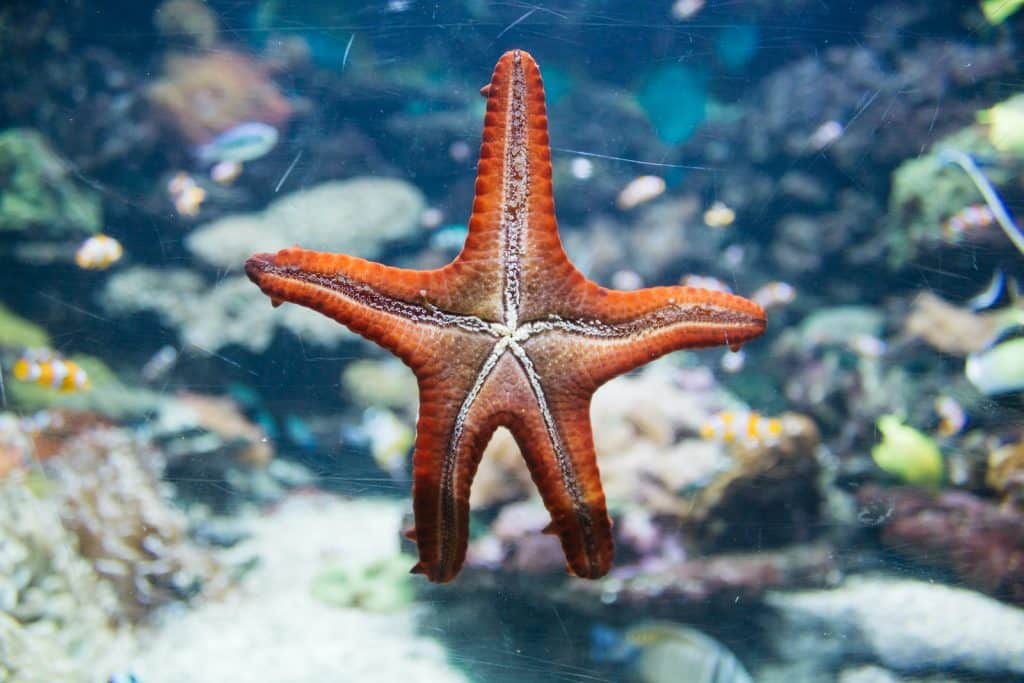
A saltwater aquarium would not be complete without starfish. Starfish are attractive and keep your aquarium clean. There are many species of starfish available. Each one has its own color and needs. It is easy to match a starfish to your environment by comparing just a few variables. This will ensure that your starfish is healthy and not disrupting the ecosystem.
We have ten species of saltwater starfish for you to examine so that you can determine which one is the best fit for your environment. We will discuss feeding, coral safety, adult size, and other topics to help you choose the right starfish for your needs.
These are the ten starfish that we are currently examining in alphabetical order.
1. Asterina Starfish
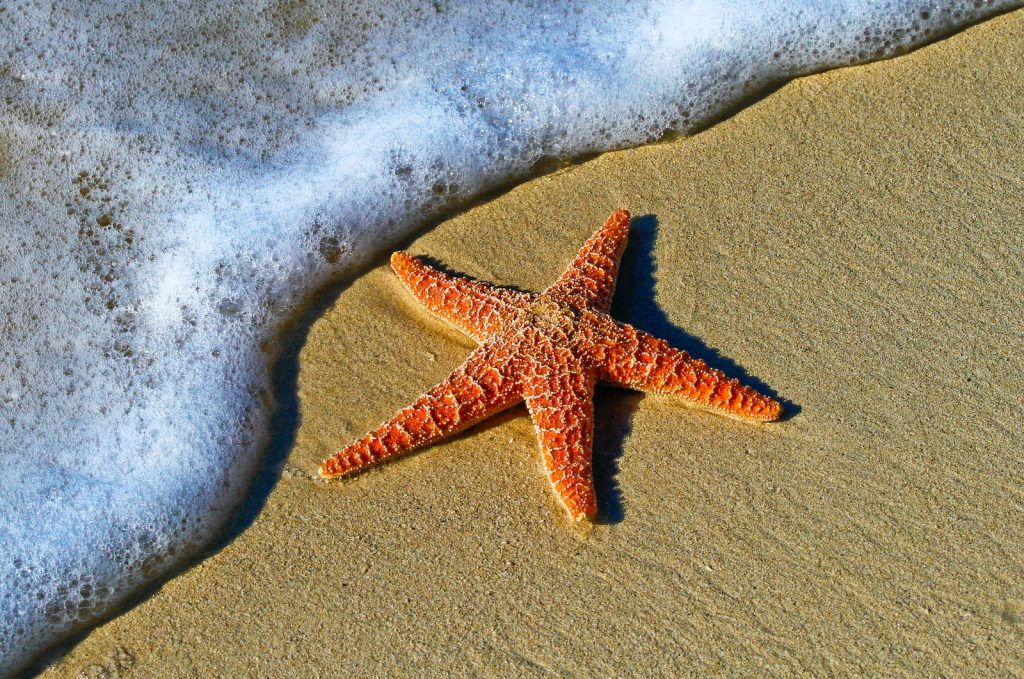
The Asterina Starfish will not be your pet starfish. The Asterina Starfish is accidentally introduced to your aquarium by placing a live rock or other materials inside. It then hides within. There are many Asterina species. Some are dangerous to coral and others are not. If not addressed quickly, they can quickly reproduce and become a problem.
2. Basket starfish
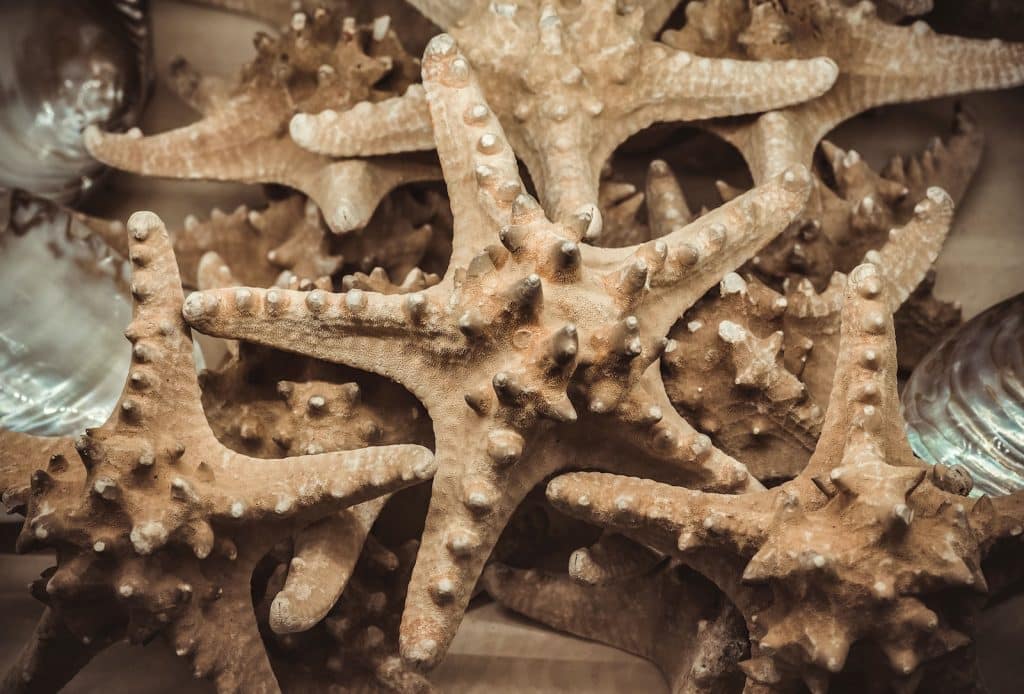
The Basket Starfish, a starfish with a strange appearance, is in the same category as the Brittle Starfish. To get their nutrition, this breed relies on nocturnal filtering. Although it is hard to get them to eat during daylight hours, it is possible. Even experienced aquarium keepers can find it difficult to provide them with enough nutrients. They can also become very large and delicate. To house them properly, you’ll need at least 180 gallons of aquarium glass.
3. Blue Linckia Starfish
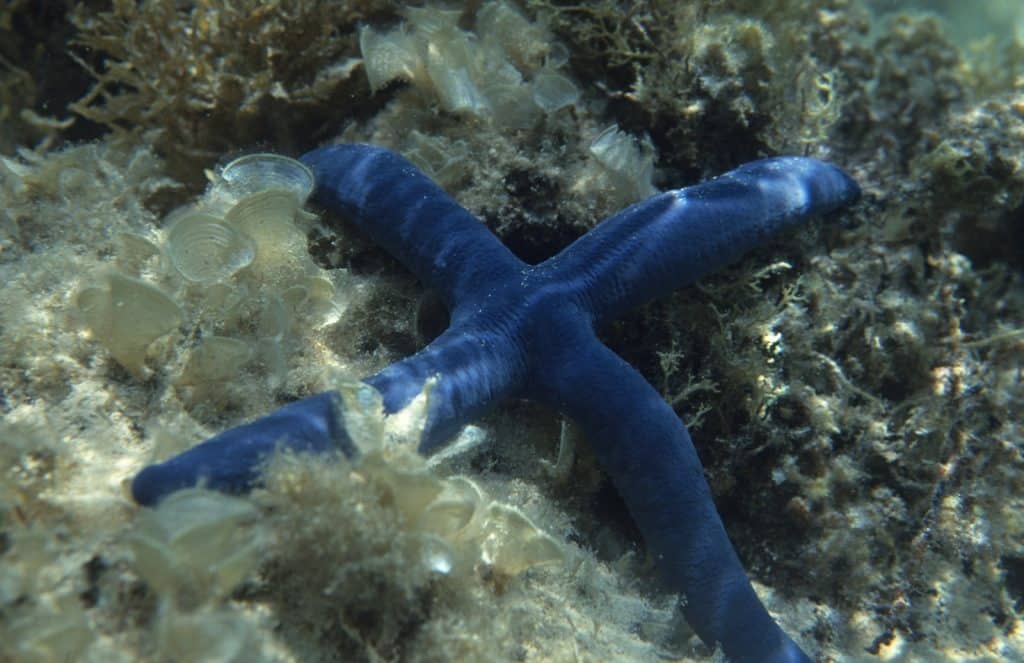
Blue Linckia starfish have a deep blue color and resemble stuffed animals. If the conditions are right, it can grow up to 12 inches in size. To properly feed them, they will need a mature coral tank. Blue Linckia Starfish, one of our most difficult starfish breeds to raise, is the Blue Linckia Starfish. Because they are fragile and difficult to transport, most specimens get damaged in the ocean. To get your starfish used to the tank’s water, you will need drip acclimation. You will also need to inspect the mouth for tiny parasitic snails that can be found in this species. A Blue Lnckia Starfish may reach 12 inches in length if it is successful.
4. Brittle starfish
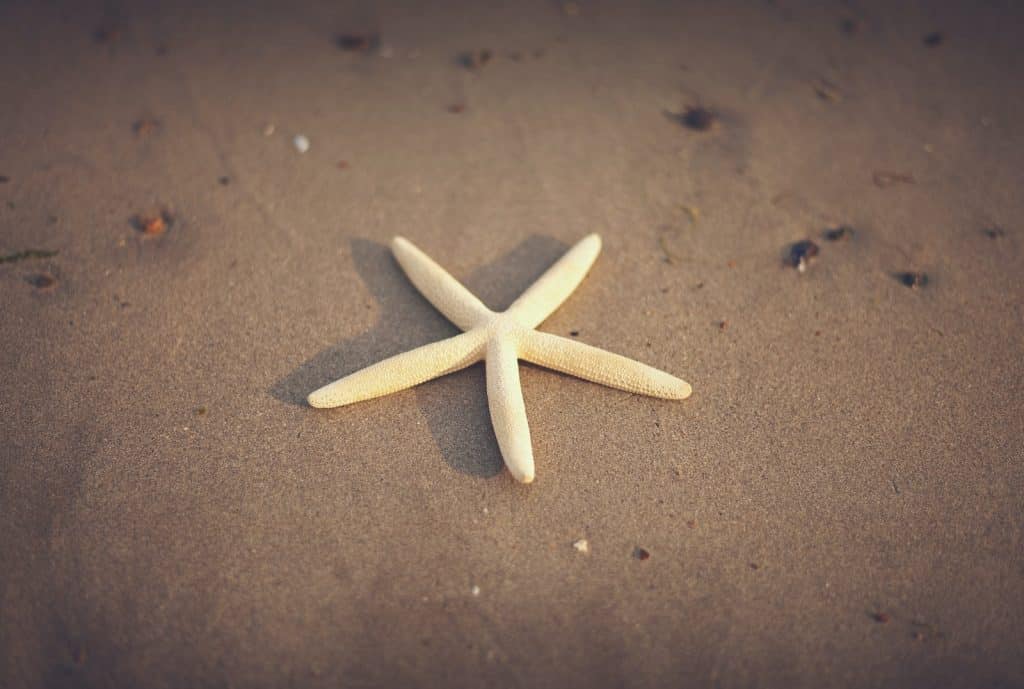
The long arms of brittle starfish are easy to break. The arm will break easily and flop around to attract predators’ attention, while starfish run. The arm will grow back like a lizard tail once it has reached safety. They can grow to about a foot in length and are very active while hunting. The nocturnal brittle starfish will hide in the dark, but they will still move for food during daylight hours.
5. Chocolate Chip Starfish
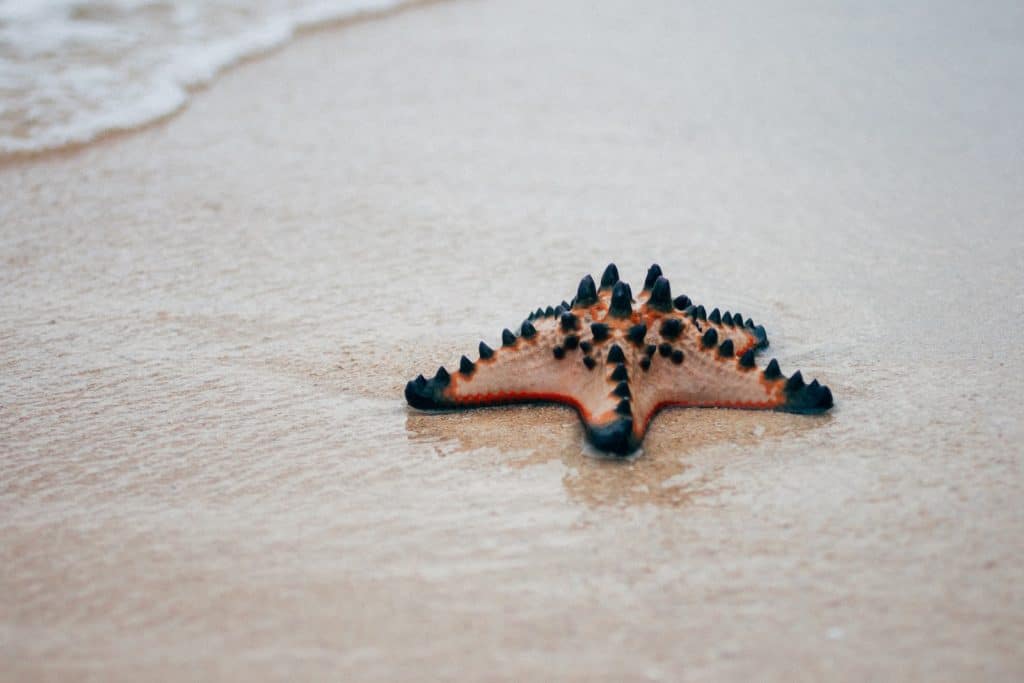
You will be able to see the Chocolate Chip Starfish and get a good idea of their origins. The starfish has an orange body, with a bit of white in the fingers. On the top, there are brown knobby spines. They look very similar to chocolate chips. This is a popular starfish breed that is easy to keep. They are active and can be seen eating and hunting food. They can grow up to 15 inches in length. Before you buy a Chocolate Chip Starfish, remember that they can cause damage to corals and anemones in your tank.
6. Double Star Starfish
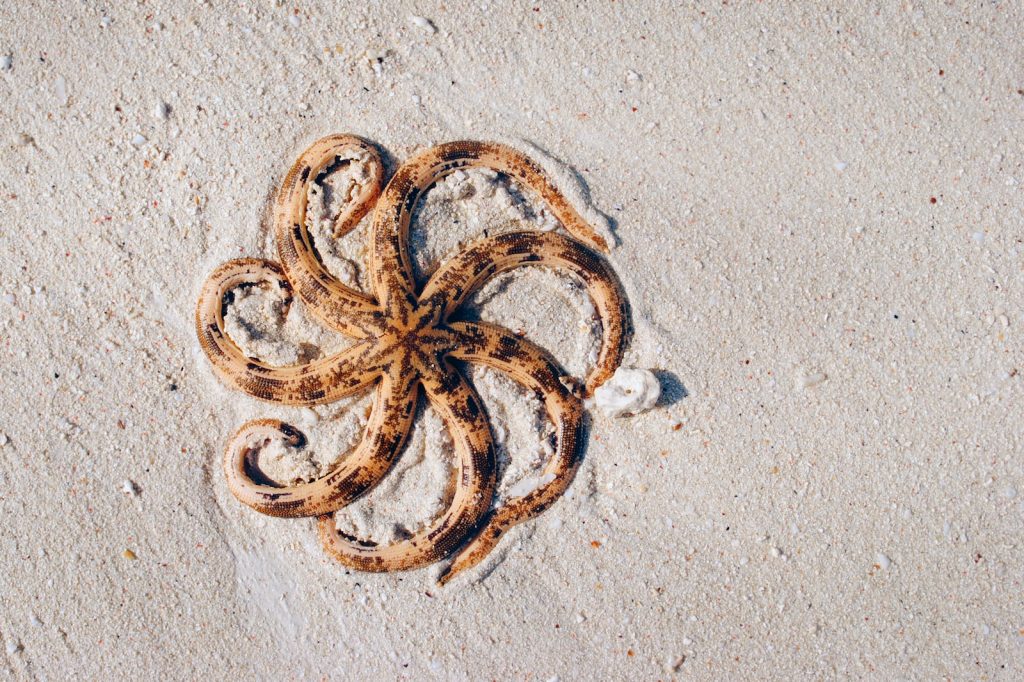
Double Star starfish are sensitive to water temperature fluctuations. They need a stable environment and constant monitoring. They can also die from starvation if they are not given the right environment. Expert supervision is required. They come in many attractive colors, which can make any aquarium look stunning. We recommend them only to experienced aquarium keepers who can tell if the starfish is healthy and happy. This starfish breed can grow up to 12 inches in size.
7. Green Brittle Starfish
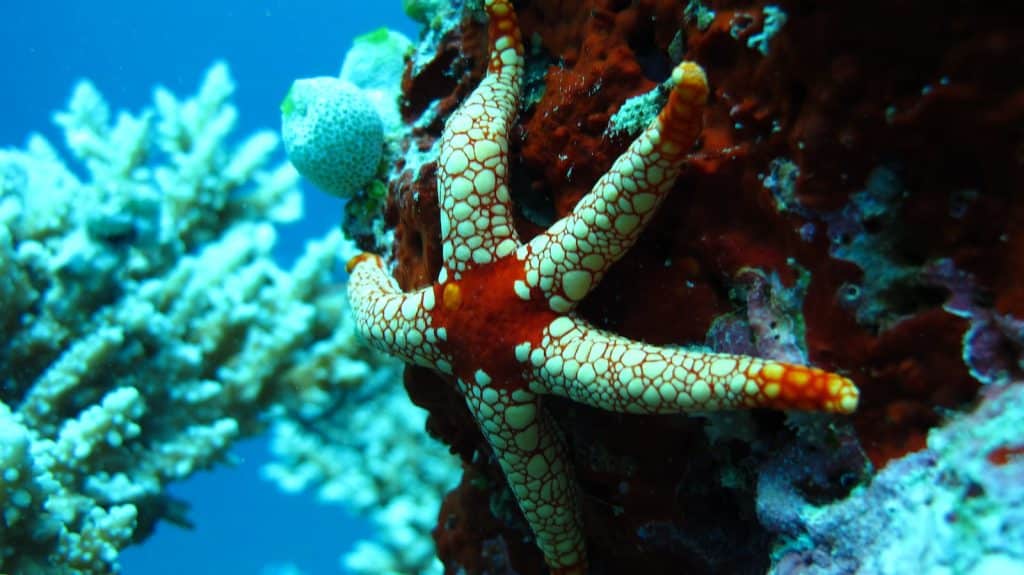
The Green Brittle Starfish is similar to a Brittle Starfish, but with a green tint. They are an entirely different breed and can be quite aggressive. They will attack shrimp and crabs, as well as small fish. The starfish has a small central body that prevents them from attacking large fish. However, bottom cleaners such as the Goby could be at risk. These starfish can reach up to 1 foot in length so a large tank is necessary. To house the Green Brittle comfortably, we recommend an aquarium of no less than 55 gallons.
8. Luzon Starfish
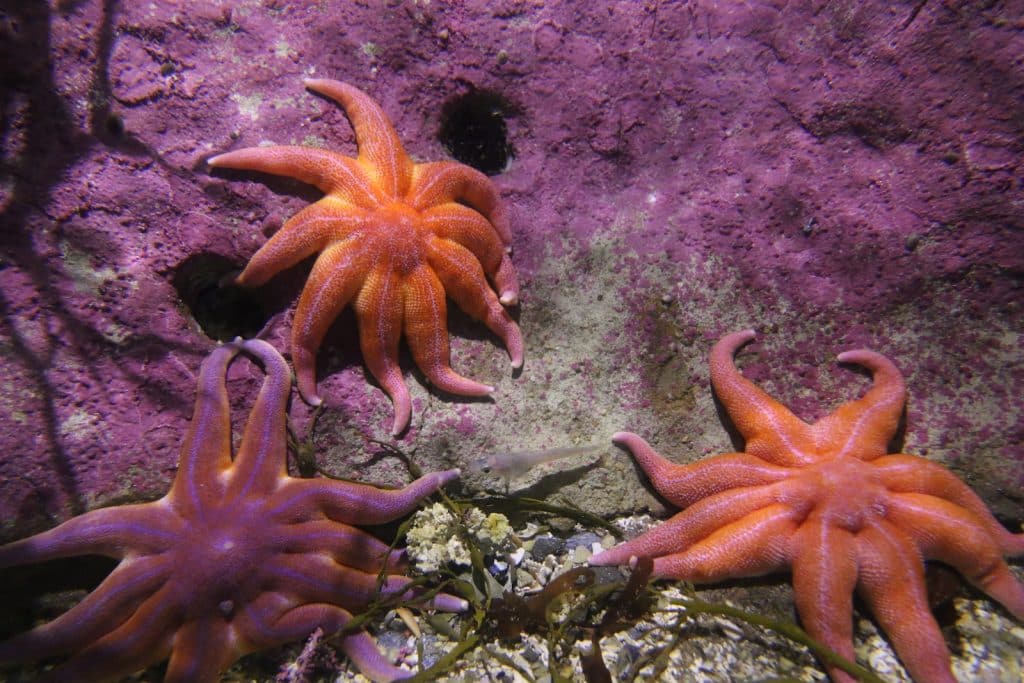
One of the most unique species is the Luzon Starfish. It reproduces by breaking off an arm that then grows into a new fish. Although they are easy to care for, they will need a special diet. A reef aquarium is the best option to keep them happy as they won’t eat meat pieces like other species. Luzon Starfish can grow up to 5 inches in length.
9. Marble Starfish
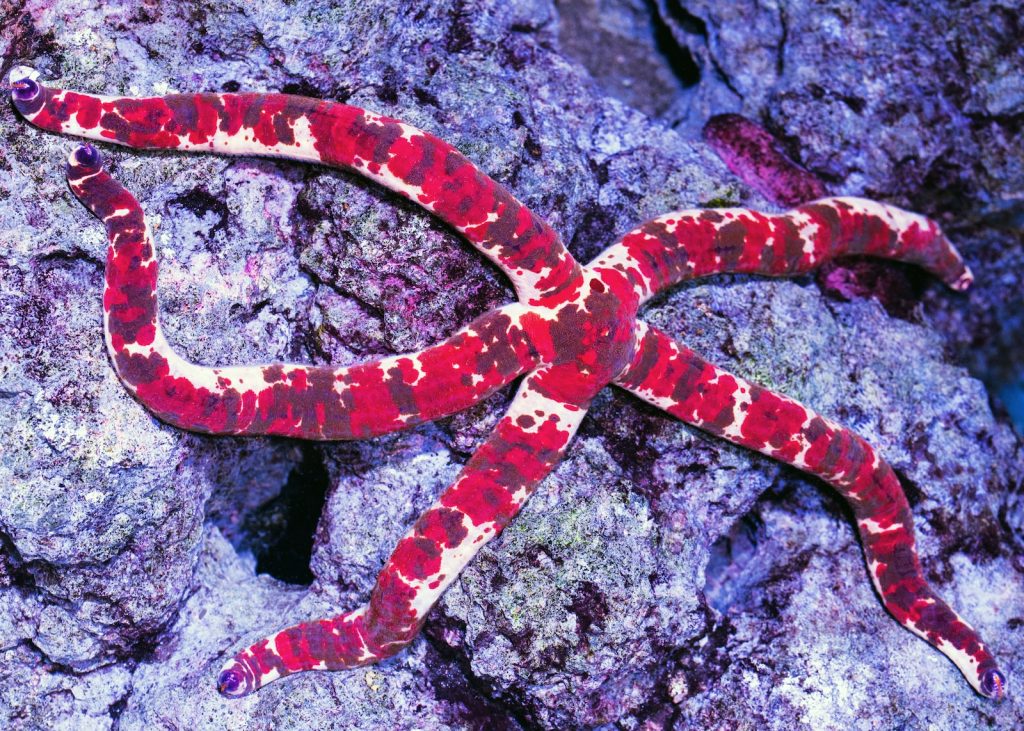
Marble starfish are very attractive. It refers to starfish with similar markings. These starfish are well-known for their durability and long lives. Marble Starfish can grow up to six inches in length, but they require large tanks. Larger tanks produce more algae and water chemistry and temperature changes are slower.
10. Red Knobbed Starfish
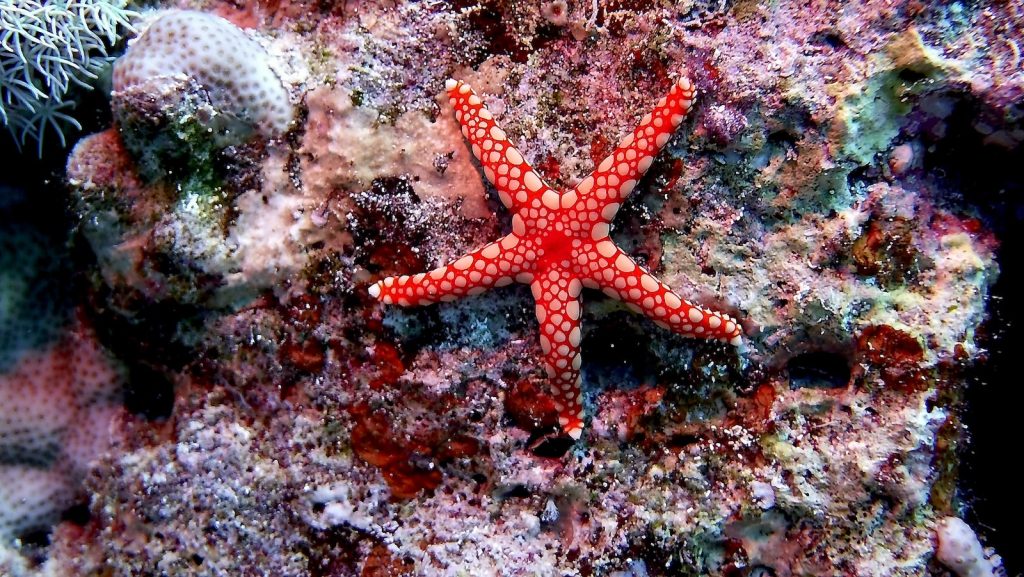
The Red Knobbed Starfish looks similar to the Chocolate Chip starfish. This species is white with red stripes. This variety’s spikes are darker than brown. Although this breed is rare than Chocolate Chip, it is still very affordable and can grow up to 12 inches in size. Due to its appetite, it would be a good idea not to keep this breed in a tank.
11. Sand Sifting Starfish
The most well-known species of aquarium starfish is the Sand Sifting Starfish. They are lively and entertaining and provide hours of entertainment. They are easy to care for and, as their name implies, spend their time digging through the sand looking for food. This helps to maintain the aquarium’s cleanliness.
Sand Sifting Starfish can reach eight inches in size and can be kept safe in a reef tank.
12. Serpent Starfish
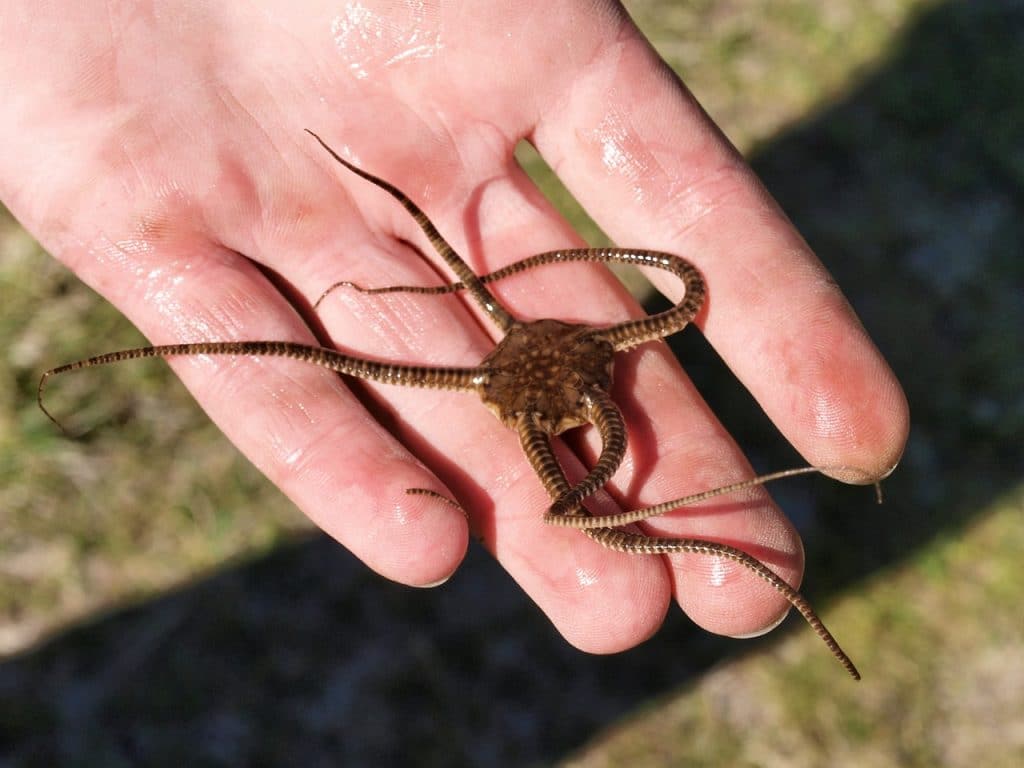
Another breed of Brittle Starfish is the Serpent Starfish. This breed does not have the bristles and spikes that the Brittle Starfish has. They come in many colors and their body is completely smooth. They are easy to take care of and eat mostly leftovers or dead prey. The average Serpent Starfish measures 12 inches in width.
13. Feather Starfish
Feather Starfish, also known as Sea Lilies, are members of an ancient group of Echinoderms known as Crinoids. They are the closest thing to aliens you will ever see on this planet, and even among Starfish, they are strange to see. Some species even swim actively in the water column!
Summary
Starfish can be difficult to raise in a home aquarium. However, it can be very rewarding. Anyone who is interested in learning more about these fascinating creatures should consider the Sand Sifting Starfish. These starfish are extremely hardy and can live for a very long time, so you will have plenty of opportunities to perfect the art of balancing an ecosystem. Once you are proficient, you can try any other variety. The aquarium you have will determine which one you buy.
We hope that you enjoyed this article and have learned something. We are glad you found this information useful. Please share it on Facebook and Twitter.
Are starfish suitable for a saltwater aquarium?
Starfish are quite common in reef aquariums. Many of these organisms are carnivorous and should not be kept in reef tanks, such as the Sand sifting sea star (Astropecten polycanthus) and Chocolate chip starfish.
What are the drawbacks of starfish?
However, asexual reproduction in starfish can be detrimental. If starfish overpopulate owing to asexual reproduction, the ecosystem may suffer. Because there will not be enough food for the starfish to eat (as there is for coral), the food chain will be disrupted, potentially affecting our lives.
Should you return starfish to the sea?
If anyone encounters washed-up starfish on the beach, simply toss them back in the ocean in case they are alive. Even though they don’t appear to be alive, they may be moving.
Is it possible to become sick by touching starfish?
Many sea species use venoms and/or poisons as hunting and defense tactics. Some creatures are coated with poisons that are exceedingly dangerous to humans; for example, one touch of a crown-of-thorns starfish can introduce a toxin five times stronger than bee venom, with devastating effects.
Is it safe to handle a live starfish?
Everyone should realize the significance of not touching or removing starfish from the water. The explanation is straightforward: starfish die when they are removed from the sea. Because starfish can’t stay in the water and breathe, they get carbon monoxide poisoning and die of asphyxiation.
Is it true that a starfish may be sliced in half?
While the majority of species require the core body to be intact in order to regenerate limbs, a few tropical species may regenerate a full new starfish from just a part of a severed limb. Starfish regeneration follows a three-phase strategy that can take up to a year or more to complete.
How long can starfish survive without water?
Most starfish species can only hold their breath for 30 seconds or less. To them, 5 minutes out of water is just a death sentence, even if it is an ‘instagrammable’ death.
Can I bring a starfish back from the beach?
Collecting live specimens or living marine animals from beaches is really forbidden in several regions. While there does not appear to be a formal rule at Folly, you should always respect the local bio-diversity, which includes sand dollars and starfish.
What starfish are suitable for a reef tank?
Serpent and Brittle Sea Stars are popular reef aquarium additions because they continually disturb the bed and supply oxygen to beneficial microorganisms.